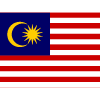Nowadays, the development of science and technology is very important not only to strengthen socio-economic development but also in terms of technology advancement for military application. The Iranian government for example, has developed nuclear power plants to generate 6,000 MW of electricity by 2010 but at the same time this technology can be used as a defense mechanism.
An advanced nation presumes an ummah who are capable of defending the nation and its people from the threat of invasion. Thus, it must possess modern military might to defend people, not to attack or control other nations and countries. Military might in the right hands will ensure stability, peace and security. The change in the world political scenario and the humiliation suffered by some countries at the hands of others makes it incumbent to possess military strength and the ability to defend oneself.
The Hadhari approach outlining strong defenses will work towards empowering the ummah in order to face the current global challenges.
Nuclear power may be a viable alternative source of energy especially now that the global community is aware of the importance of controlling carbon dioxide emissions. Fossil fuel-based electricity will account for more than 40% of global greenhouse gas emissions by 2020. In the U.S., 90% of the carbon emissions from electricity generation come from coal-fired generators. Meanwhile, nuclear energy is an important carbon-free source of power. However, there are four major unresolved problems a) high relative costs b) perceived adverse safety c) environmental, and health effects; d) potential security risks stemming from proliferation e) unresolved challenges in long-term management of nuclear waste.
The Iranian nuclear programmed has become a controversial political issue in the international arena although the development of civilian nuclear power programmes are explicitly allowed under the terms of the NPT (Nuclear Non-Proliferation Treaty) which the US has not ratified . The Iranian government has said, that it sees nuclear power as a way to modernize and diversify its energy-sources.
Iranian nuclear power is necessary for a booming population and a rapidly industrializing nation. Iran’s population has more than doubled in 20 years. The country regularly imports gasoline and electricity, and the burning of fossil fuels in large amounts severely harms Iran’s environment. Additionally, Iran wishes to diversify its sources of energy. Iran’s oil reserves are currently estimated at 133 billion barrels, at a current extraction rate of 1.5-1.8 billion barrels per year.
This is only enough oil to last for the next 74-89 years assuming extraction rates are constant and additional reserves are not found. Iranians feel its valuable oil should be used for high value products, not simple electricity generation. Petroleum is a noble material, much too valuable to burn. They envision producing 23 000 megawatts of electricity using nuclear plants as soon as possible.
On the other hand, Israel is widely believed to possess a substantial nuclear arsenal but the Israeli government refuses to officially confirm or deny that it has a nuclear weapons program.
Historically, after the Suez crisis in 1956, France agreed to help Israel build a nuclear reactor and reprocessing plant near Dimona; which used natural uranium moderated by heavy water. Plutonium production started circa 1964. By 1979 U.S. Intelligence believed Israel had designs and the fissile material for nuclear weapons, and were perhaps in a position that they could test more advanced small tactical nuclear weapons or trigger design thermonuclear weapon.
In 1998, former Prime Minister Shimon Peres claimed that Israel had “built a nuclear option, not in order to have a Hiroshima but an Oslo.” (“Hiroshima” refers to the Atomic bombings of Hiroshima and Nagasaki, while “Oslo” refers to the Oslo Accords). The “nuclear option” may refer to a nuclear weapon or to the nuclear reactor near Dimona, which Israel claims is used for scientific research. Pere, in his capacity as the Director General of the Ministry of Defense in the early 1950s, was responsible for building Israel’s nuclear capability.
On March 12, 1993, North Korea said that it planned to withdraw from the NPT and refused to allow inspectors access to its nuclear sites. By 1994, the United States believed that North Korea had enough reprocessed plutonium to produce about 10 bombs. On October 9, 2006, the North Korean government issued an announcement that it had successfully conducted a nuclear test for the first time.
The United States was the first country in the world to successfully develop nuclear weapons and is the only country to have used them in war against another nation. The United States is one of the five recognized nuclear powers under the NPT. As of January 2006, the US stockpile contained almost 10,000 nuclear warheads. This includes 5,735 active or operational warheads: 5,235 strategic and 500 nonstrategic warheads. Approximately 4,225 additional warheads are held in the reserve or inactive stockpiles, some of which will be dismantled apparently. Under plans announced by the Energy Department in June 2004 (and possibly revised in spring 2005), some 4,365 warheads were scheduled to be retired and be dismantlement by 2012 (Bulletin of the Atomic Scientist, 2005).
Science and technology has a vital role to play in the development or defense of any country. Any industry requires a community with a better understanding of science and technology in order to provide a labor force with adaptable skills and flexibility essential for innovation.
It is possible to share technology between nations. OIC is a collection of 57 nations and among them some countries are technologically more advanced in certain fields than others. For example, Malaysia has advanced a great deal in Electronics; Turkey in Telecommunications and Aviation; Pakistan in nuclear science and the Middle East in the field of petroleum and so on. If OIC member countries would share their knowledge and skills with one another, development will be at an optimum with low costs and less time. Sadly, this is not happening. Why can’t the OIC countries work together?

